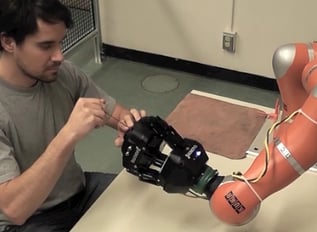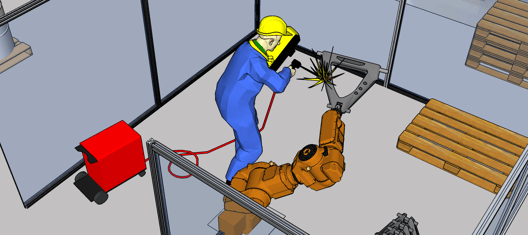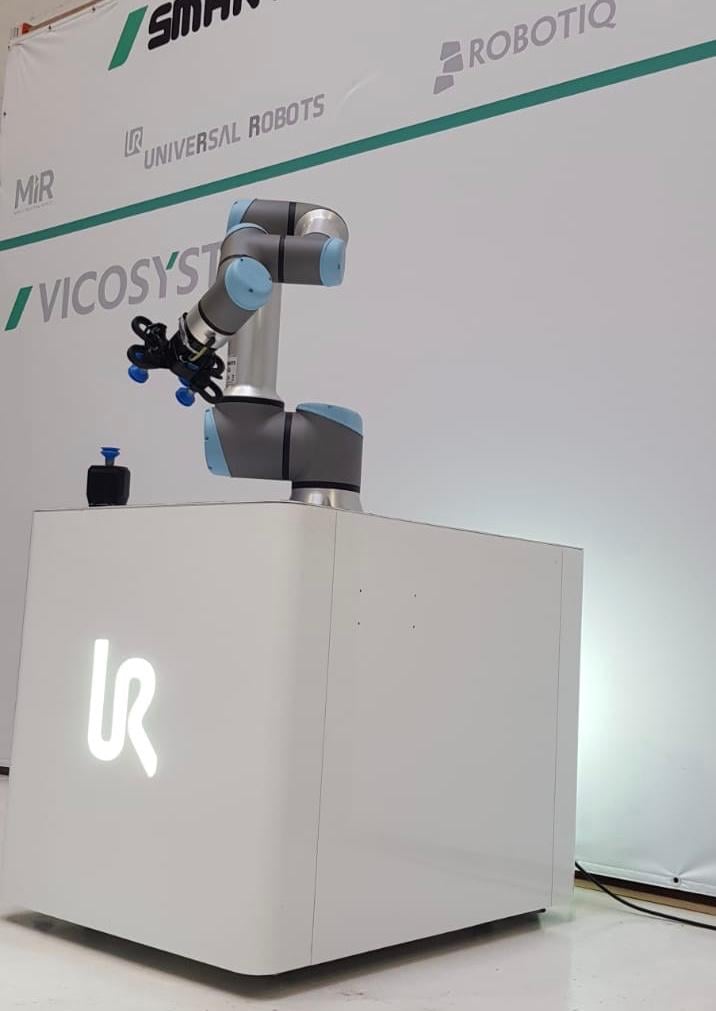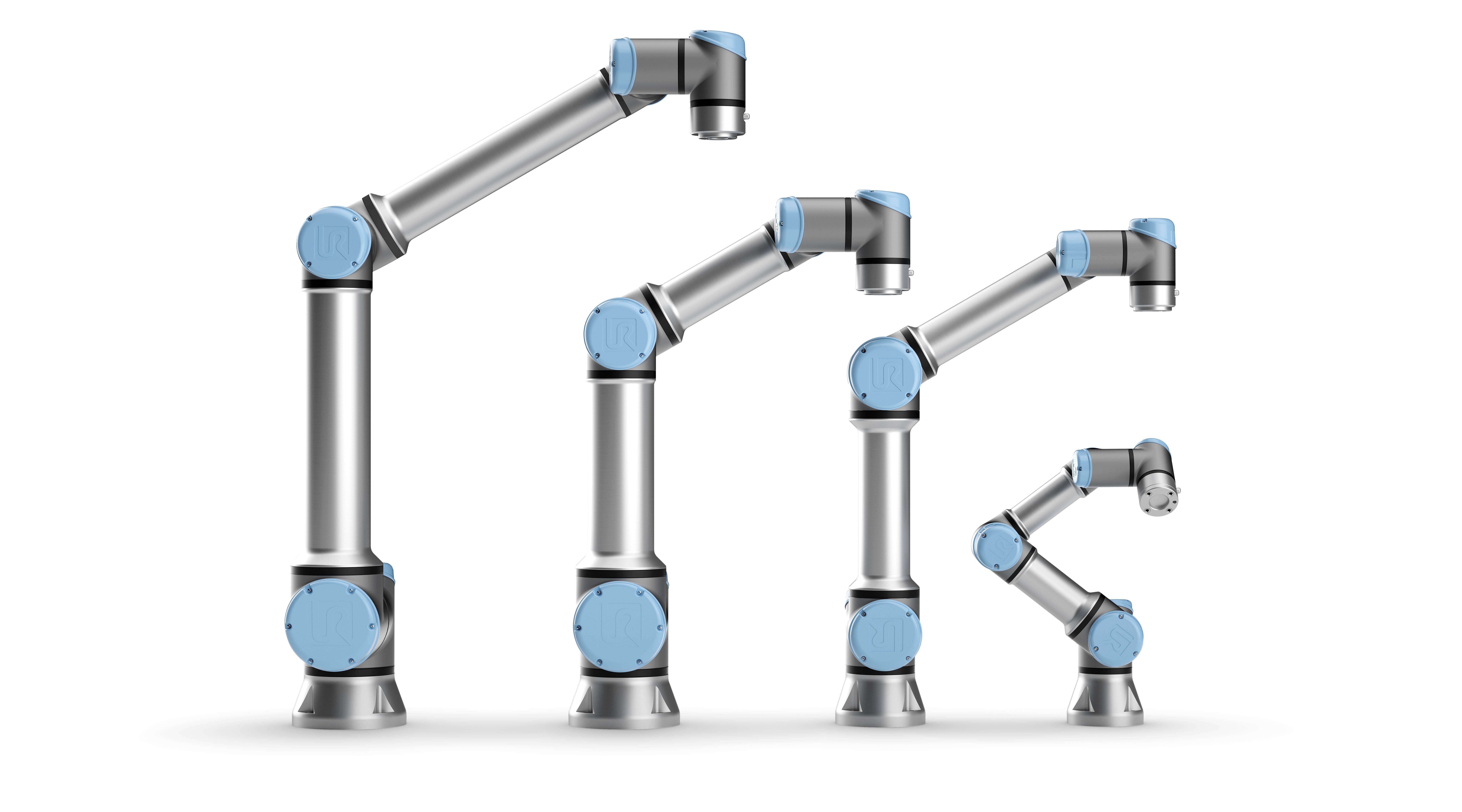Collaborative Robots are Not Job Thieves, They are Worker Tools

Posted on May 11, 2015 1:34 PM. 5 min read time
If we go back a couple years, the mentality facing robots was way different than it is now. Robots were designed to handle heavy parts, do dangerous tasks or to execute operations at an outrageous rate. Now robots are designed to work alongside humans. So they are more user friendly, do not need physical separation and most importantly they are safe for human workers to be around. So instead of stealing jobs from humans, they are actually helping them. In fact, by adding a robot to an assembly line, you can program it to help you handle a part or a do a redundant (or dangerous) task while you are busy doing something safer or more interesting.
Collaboration
There are four types of human-robot collaboration. However, we can regroup these types of collaboration in two different categories. The first one being the use of force limited robots (A.K.A. collaborative robots) being all the robot that respect the power and force RIA limitation rule. This category can be called collaborative robots since this is the more widely acknowledged definition for these robots. The second one being the use of traditional robot (A.K.A. industrial robots) in a collaborative application following the three first RIA rules of human-robot collaboration. This category can be called collaborative applications with an industrial robot.
 Collaborative Robots: First there is the use of collaborative robots that are designed to work alongside humans. Their hardware and software are adapted to work safely with humans and you can place them in the working cell next to you and they will be good to work alongside. These robots are really flexible i.e. they can be adapted to an application simply by hand-guiding them to different points and paths. They can also be transported very easily, so they are not ''dedicated'' to a station. .
Collaborative Robots: First there is the use of collaborative robots that are designed to work alongside humans. Their hardware and software are adapted to work safely with humans and you can place them in the working cell next to you and they will be good to work alongside. These robots are really flexible i.e. they can be adapted to an application simply by hand-guiding them to different points and paths. They can also be transported very easily, so they are not ''dedicated'' to a station. .
In the picture you can see the robot is fixed to the table and is helping the worker to assemble a robotic hand. The robot can be programmed to do these kinds of applications and with just a couple of hand-guiding operations, so you can change the program and use it for another application.- Collaborative Applications with an Industrial Robot: Collaborative applications use industrial robots instead of collaborative robots. To make the application collaborative, safety sensors such as a vision system is used. The robot is backed by a safety software program that makes the industrial robot in the work cell safe for the worker. So the whole cell is collaborative and leads to a safe human-robot collaboration. However, these robots are much more complex to program and cannot be transferred from a station to another. The robot must then be dedicated to a limited set of applications..

In the picture above, the worker is doing a welding application while the robot is handling the part for him. No need for complex jigs or turntables, the robot can adapt its position depending on the steps of the work. The cell has to be backed by safety components because the robot itself is not designed for human-robot collaboration. This cell is relatively rigid since you can't change the robot program easily. You still need to go back to your computer and program the robot with classic coding knowledge. It is then more complex to use these types of devices. Notice that this particular application is probably not possible with a collaborative robot... you still need to consider the robot specifications for your application.
''Ninety percent of tasks in manufacturing have not been automated because it’s not been practical to do so” - Jim Lawton
Robots as a Tool
Now that we know that robots can be used as a tool instead of a complete (complex) work cell, it is easier to re-think what can be done using these devices. I specially choose the word ''device'' for a reason, in fact using a robot is now the same as using any other devices in your tool box. It may be a strange statement, but with easy programming methods and flexibility you can realize almost anything with robots: applying glue, fixing parts together, handling parts... they can be a 3rd or 4th hand.
As you can see in the video, the workers are using robot to do various tasks using a wide range of tools. While the worker is doing different loading or measuring tasks, the robot is still running. So the productivity increases without increased stress and rushing your employees.
Some people may say that robots are expensive and that you cannot compare it to other devices. Well, robots like the UR3 are under 30k$. Depending on the yearly salary of your employees, it is not an expensive investment to be able to increase productivity and enhance metrics such as product quality or general working spirit.
Here are a couple of observations from Jim Lawton of Rethink Robotics that can make you change your perception regarding collaborative robots.
- “Ninety percent of tasks in manufacturing have not been automated because it’s not been practical to do so” with standard industrial robotics technology, he said, citing a recent Boston Consulting Group study.
- Most small to mid-sized manufacturers are out of the robotics loop because they often lack industrial robot programming knowledge.
- Plus, these smaller manufacturers typically perform widely varying job shop production and therefore need robots to be very flexible—something most industrial robots do not lend themselves too easily. “Robots need to accommodate a production environment that’s not precise,” said Lawton.
By looking at these observations, the introduction of cobots seems a good solution for many manufacturing businesses.
I hope that the general mind set regarding robots (and especially collaborative robots) will change sometime soon. It is aberrant to see such opportunities being missed by businesses because of simple paradigms that should simply be crushed. To get more information on how fast it is to pay back the robotic investment in your workshop, you can drag you cursor to the big colored icon and see what can be done!

 Collaborative Robots: First there is the use of collaborative robots that are designed to work alongside humans. Their hardware and software are adapted to work safely with humans and you can place them in the working cell next to you and they will be good to work alongside. These robots are really flexible i.e. they can be adapted to an application simply by hand-guiding them to different points and paths. They can also be transported very easily, so they are not ''dedicated'' to a station. .
Collaborative Robots: First there is the use of collaborative robots that are designed to work alongside humans. Their hardware and software are adapted to work safely with humans and you can place them in the working cell next to you and they will be good to work alongside. These robots are really flexible i.e. they can be adapted to an application simply by hand-guiding them to different points and paths. They can also be transported very easily, so they are not ''dedicated'' to a station. . 







Leave a comment